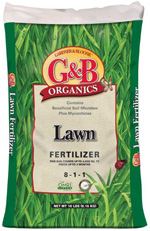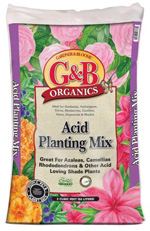|

      
|
 |
"In joy or sadness, flowers are our constant friends." |

|
|

|
Everyone knows that life is challenging and stressful. In today's hectic world, what could be better than adding another element of relaxation to the place we treat as our own personal oasis--our home? Experiencing nature is a popular way for many people to de-stress; wouldn't it be great to have an area that serves as a retreat, accessible at all times, right in your own backyard? The area you choose could be a shady patio or a quiet corner of the garden. Try to choose a spot where you are not likely to hear traffic noise or the sounds of neighbors. For instance, if your neighbors entertain frequently outdoors, your quiet spot should probably not be adjacent to that area. Also, be sure that this area can be relatively private. It should not be visible from the adjacent properties or the street and, if it is, you should be able to screen it with plantings or structures. When planning the garden, consider what you will hear, see, smell and touch. Make sure that the elements you choose will give you a peaceful, calm feeling rather than exciting your senses. As a general rule, choose elements that will provide softer, lighter sounds, lighter fragrances and more muted colors. Many people find the sounds of a wind chime to be very relaxing; you can choose from many different tones, from light and tinkling to deeper, more sonorous sounds. If you really enjoy the sounds of chimes you could choose several in complementary tones. The sound and appearance of water is an element that promotes almost instantaneous relaxation for most people. A small fountain, either purchased or constructed from a beautiful ceramic pot, would be a great choice for a small area or patio. A small area would also accommodate a rock column fountain; it consists of one or more standing rocks that have been drilled so that the water comes up through the center and trickles gently down the face of the rock. The water then percolates through some stones at the base of the rocks; the basin is actually underground, so there is no visible standing water to contend with. When choosing your plant palette, green should be the predominant foliage color. The color green is widely known to promote relaxation. You could choose plants with different colors of green foliage and, if the area is very dark, the addition of a few plants with variegated foliage (preferably white and green) would help to lighten the area. Flowers (if any) should be chosen from the cooler color range such as white, lavender or blue; brighter colors (red, yellow, orange) excite the senses, while cooler colors promote relaxation. Incorporate some plants that will provide fragrance at different times of the year. Select some comfortable seating. This could be a weathered teak bench, a comfy rocking chair or glider or even a hammock. The floor of the area should tie in with the natural elements already used; loose-laid slate or flagstone (possibly with a small groundcover such as pink thyme or scotch moss growing between the stones) would be ideal. The final step is to select one or two carefully-considered garden art pieces. If you are spiritual, this could be a St. Francis or St. Fiacre statue, a Buddha or some other piece that has special meaning to you. It might also be a bird bath, gazing ball or some beautiful blown-glass pieces hanging in the trees. A beautiful garden plaque hanging on a fence can accentuate the plant material surrounding it and provide a focal point of the garden. With careful consideration and a little planning, you can create an area that will provide peace and tranquility to all who enter, right in your own backyard. |
 |
|
One of the most versatile herbs one can use in cooking is basil. Most cooks agree that it is definitively a must-have herb. Basil is used to add flavor to salads, soups, sauces, marinades, and dressings. When combined with olive oil and pine nuts, it becomes the key ingredient for making pesto sauce. Basil is a tender herb that is originally native to India and other tropical regions of Asia, having been cultivated there for more than 5,000 years. It is a prominent part of cuisines throughout the world, including Italian, Thai, Vietnamese and Laotian. The leaves taste somewhat like anise, with a strong, fragrant, sweet smell, but the flavors vary and are distinct between varieties. Basil is very sensitive to cold, but can be grown successfully as a warm season annual in just about any climate. It prefers a warm, sunny location and, while it will do just fine in the garden, performs exceptionally well in containers where the heat from the side of the pot keeps the roots warm and happy. In fact, it's very easy to plant three or four different varieties in the same pot for a colorful patio container and a diverse set of flavors for your cooking. You can even plant a number of pots in combinations of distinct flavor categories or colors. It's completely up to you; the key is to have fun and let your taste buds run wild! |

Are you planning on putting a stone path in your lawn or garden? If so, you've got a great opportunity for some great garden design. Don't just plunk those stones atop your sod! There are many low-growing perennial plants that are just great between stones in a path, and will add more personality to your garden than mere grass. To help you select the best ground cover, consider:
Improve the growing conditions when you carve out the soil for your new stone path. It's difficult to grow anything in a trampled area. The soil gets so compacted that roots cannot deliver water and nutrients to the plant. Add good drainage as well as a layer of topsoil at least 1 in. deep around the stones so your ground cover can thrive. Finally, help your new ground cover prosper with a weekly soaking (the plants need to stay moist) and a weekly hand weeding. And if you'd like to keep the plants short between the stones, consider plants that tolerate mowing, such as thyme and ajuga. |

|
Even if you don't particularly like them, you've got to admit that ants are fascinating creatures. They've certainly stood the test of time: they have been around for a mere 110-130 million years and have colonized almost every landmass on earth. They employ the concept of division of labor, they communicate amongst themselves and they have demonstrated an ability to solve many a complex problem. Like people, they sometimes perform good deeds and sometimes...not so much. One not-so-good thing they do (from a human perspective, that is) is make life really easy for aphids, mealybugs and scale. Those little guys are the ones that suck the life juices out of our most prized possessions--our plants! Even though this is really irritating, the complex relationship between ants and these three villains is still pretty amazing. Here's how it goes: aphids, mealybugs and scale just love to feed on the juices of plants. As they are voraciously feeding on the plants, they are also secreting a sugary, sticky liquid called honeydew. Ants love honeydew. Even though a large amount of honeydew is being secreted as these insects feed, it is not fast enough for the hungry ants. They begin to "milk" the insects for more, by stroking them with their antennae. In the meantime, to protect their precious honeydew, the ants are also busily warding off predatory (to their honeydew-makers) insects such as lady bugs and lacewings. Many times, the ants will take aphid "slaves." When migrating to a new area, they take aphids with them to ensure a continued supply of honeydew. Some ants go above and beyond, storing the aphid eggs in their nests over the winter, then carrying the newly-hatched aphids back to a plant for them to feed on in the spring. So, next time you wonder why there are ants on your plant and if they are eating the plant, our advice is this: look for the root cause of the problem. Chances are, where there are ants on plants, you will see a sticky residue and one of their BFF's--aphids, mealybugs or scale. The good news is: we can help you solve the problem and restore your plant back to health! Just visit us for a solution! |
 |
|
What do the numbers on a bag of fertilizer mean? Answer: If you have a bag of fertilizer labeled 16-16-16, it would contain 16% nitrogen (for growth and green color), 16% phosphorus (for root development and flower/fruit production) and 16% potash (for plant health and foliage cell structure). The guaranteed analysis varies from brand to brand and product to product, with different combinations of NPK used for different types of plants and lawns. 1 For those of you who want to know why K is for potash, "potash" is commonly used for the soil fertilizer forms of potassium, which has the chemical symbol "K" (from the Latin, which is kalium). |

|
Summer is perfect for grilling! This quick marinade makes flavorful, juicy chicken ready for the grill in less than 30 minutes. Serve with homemade potato salad and grilled vegetables for a great summertime dinner in less than an hour.
Step by Step:
Yield: 6 servings. Recipe courtesy of "Cooking for Pleasure" by Jeanine Harsen. |
 |
Written content © Garden Partners LLC, or respective authors. All Rights Reserved. Privacy Policy. All written content contained in this site is protected by United States copyright law and may not be reproduced, distributed, transmitted, displayed, published, or broadcast without prior written permission of Garden Partners, LLC. You may not alter or remove any trademark, copyright or other notice from copies of the content. |



